A recent survey from LuggageHero reveals the most pedestrian-friendly cities in the world. And it's perfect timing, considering that very few of us feel comfortable in confined mass transportation spaces at the moment.
Analyzing data in the world's most-visited capital cities (with the addition of New York), the survey's rankings are the result of several factors, including walking trails, road quality score, traffic index, nature and parks, and even hours of sunshine.
So, which of these international cities would you like to take a stroll through?
28. Lima, Peru

Getty
Visitors will especially love Jiron de La Union (Union Street), a pedestrian street linking the city's plazas found in the Historic Centre.
The Park of the Exposition, found in downtown's Santa Beatriz neighborhood, hosted the Lima International Exhibition in 1872 and remains home to the city's best museums.
27. Brussels, Belgium

Getty
Brussels' desire to make itself more walkable led to the creation of the Pedestrian Zone, which spans about 125 acres and included the addition of nearly 10,000 square feet of green space.
In the Pedestrian Zone, you'll find the Boulevard Anspach, the Place Fontainas, the Place de la Brouckere and the Place de la Bourse.
26. Hanoi, Vietnam

Getty
Hanoi also created a number of pedestrian zones near Hoan Kiem Lake, which were launched in 2016.
The streets closed off to vehicles include Le Thach, Dinh Tien Hoang, Trang Tien and Hang Khay, all of which have become popular tourist areas.
25. Delhi, India

Getty
Dehli has been working to make its streets safer for pedestrians, including closing the Krishna Nagar market to vehicles and giving walkers nearly a mile to shop without fear of cars.
In 2019, Delhi turned its car-packed Chandni Chowk into a pedestrian zone, but alas, the city is reverting the street back to one for automobiles.
24. Bangkok, Thailand

Getty
Bangkok has been adding more and more pedestrian areas for its residents and visitors, from footbridges just for walkers to its newest pedestrian walkway that helps people navigate around crowded auto streets and just opened in the summer of 2020.
The skywalk at Pathumwan intersection connects Siam Square, the National Stadium, Siam Discovery, MBK and the Bangkok Art and Culture Centre in an elevated, auto-free zone.
23. Cairo, Egypt

Getty
Cairo's city planners announced plans to make downtown a pedestrian zone, which remains in the works.
As part of the 15-year project, government offices are being relocated to convert them into museums and hotels that welcome tourists.
22. Dublin, Ireland
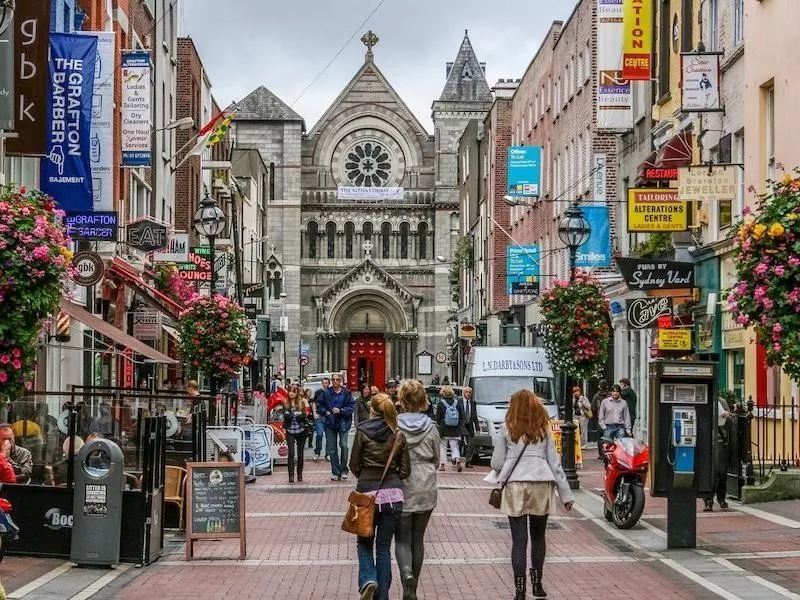
Getty
Dublin's popular shopping avenue, Grafton Street, was made a pedestrian street in 1983.
Following the pandemic, streets around the area have also been moving into pedestrian trail zones to help promote businesses — perhaps they will become permanent?
21. Warsaw, Poland
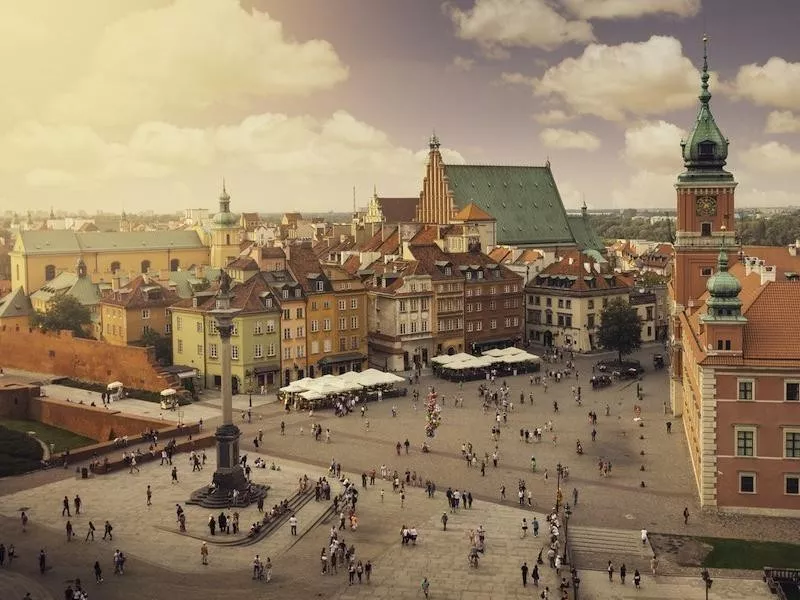
Getty
The Polish capital's most popular pedestrian street is Nowy Swiat, one of the best areas for shopping and dining. And will soon be joined by the Wola district "living street."
Stretching more than 400 feet, the street will span 19 feet to give pedestrians more room to enjoy the area.
20. Stockholm, Sweden

Getty
Although Stockholm is an island-city with 14 different islands, it remains pedestrian-friendly. Its most popular shopping thoroughfare is Queen Street (Drottninggata), but that's not enough for Stockholm.
Following in Oslo's footsteps with pedestrian zones, Stockholm has a number of projects in the works to eliminate cars from its center.
19. Dubai, United Arab Emirates

Getty
Dubai sprouted from the desert quickly, adding high rises and roads aplenty, but practically eliminated walking areas with the addition of Sheikh Zayed Road, which features 16 to 24 car lanes.
But the city is working to correct this problem in its newer developments. Jumeirah Beach Residence, for example, included 4 miles of landscaped walkways for its residential community, the largest in the world.
18. Copenhagen, Denmark

Getty
Known mainly for being a bicycling city where residents own more two-wheelers than cars, Copenhagen also features one of the longest pedestrian streets in Europe.
At nearly 2 miles in length, the central street, Stroget, was transformed into a walkable destination well ahead of its time in 1963.
17. Athens, Greece

Getty
To make way for crowds attending the 2004 Olympic games, a pedestrian bridge was built to Athens Olympic Park.
COVID had an effect on the city's streets as well, resulting in a three-month car ban to create a pedestrian zone in Athen's center.
16. Moscow, Russia

Getty
Moscow's famous Nikolskaya and Arbat Streets have long been pedestrian zones in the historic area of the city, existing for more than 30 years.
But in recent years, new pedestrian zones have emerged, including Maroseyka Petrovka and Pyatnitskaya Streets. And more may come!
15. Buenos Aires, Argentina
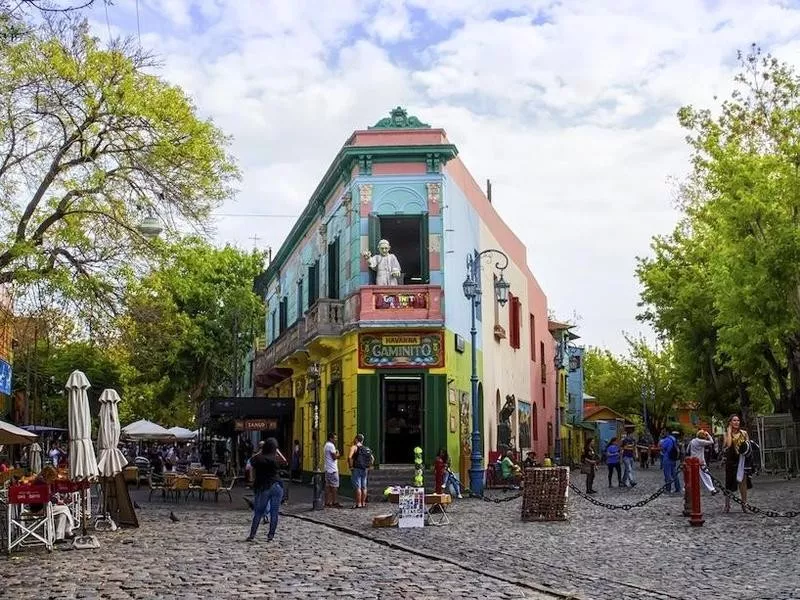
Getty
Calle Florida is Buenos Aires' longest and most popular shopping street. Located in downtown, this pedestrian mall has survived nearly half a century.
Even within the last five years, the city has been transforming hundreds of blocks into pedestrian streets, supporting the belief that these areas are the way of the future.
14. Rome, Italy

Getty
Due to its size and immense traffic, Rome not only created permanent pedestrian zones, but has also restricted driving zones that take place on different days in an attempt to open up the city.
The Tridente takes Piazza del Popolo's three biggest streets — di Ripetta, del Corso and del Babuino — and makes them pedestrian-friendly during the daylight hours.
13. Budapest, Hungary

Getty
On the Pest side of the Danube awaits the pedestrian shopping and dining area along and surrounding Vaci Street.
But that's just the original. Kiraly Street and Raday Street provide more than a mile of walking areas on their own.
12. Amsterdam, The Netherlands
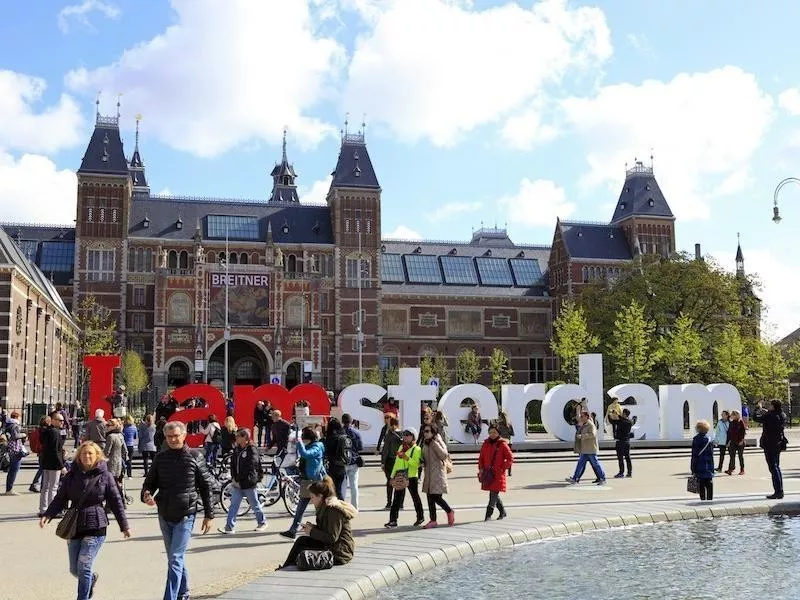
Getty
Another pedal-friendly city with bike lanes aplenty finds its old city navigating around the canals to be car-free — and all are within steps of the 120-acre urban Vondelpark, providing ample walking space for residents and visitors.
The city has been working to expand its pedestrian zones beyond their current city centre borders and has been tirelessly working to do so since 2016.
11. Berlin, Germany
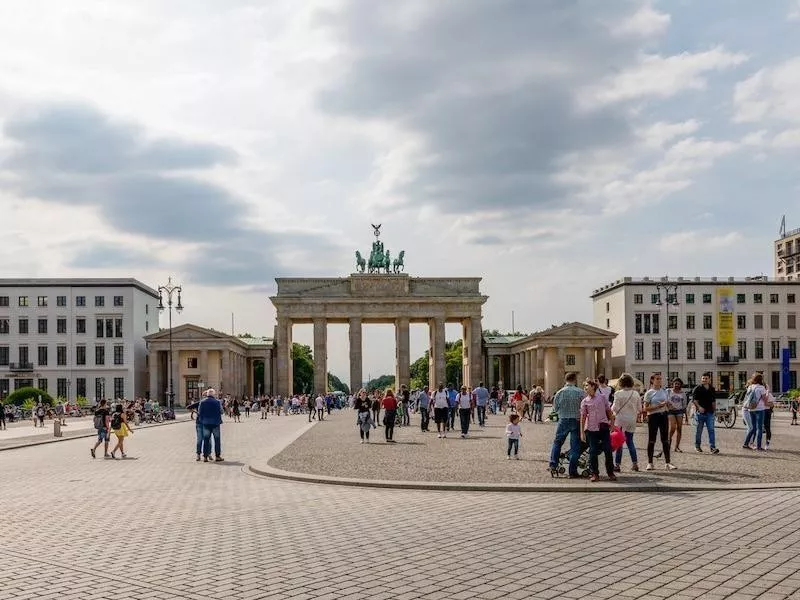
Getty
When Kurfurstendamm became the city's largest retail district with more than 656,000 square feet of shopping, it became the city's most popular shopping destination.
In 2020, the city began to transform its Friedrichstrasse into a pedestrian zone filled with luxury shops, giving it a chance to surpass Kurfurstendamm in popularity.
10. Paris, France
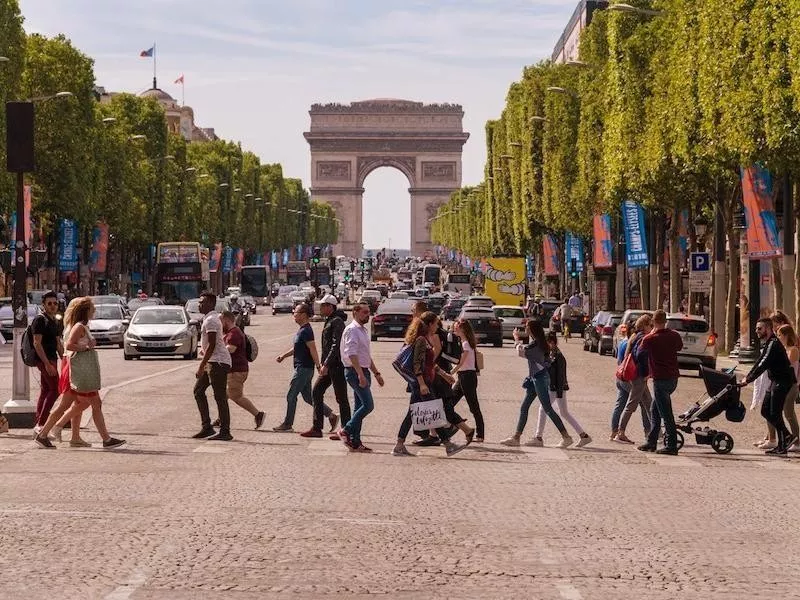
Getty
Paris features more than 421 parks and gardens and has numerous pedestrian-only areas.
You can explore the city by foot in the Las Halles district, Luxembourg Gardens, around the Bastille and the Place de la Republique — no wonder it lands in the top 10.
9. London, England
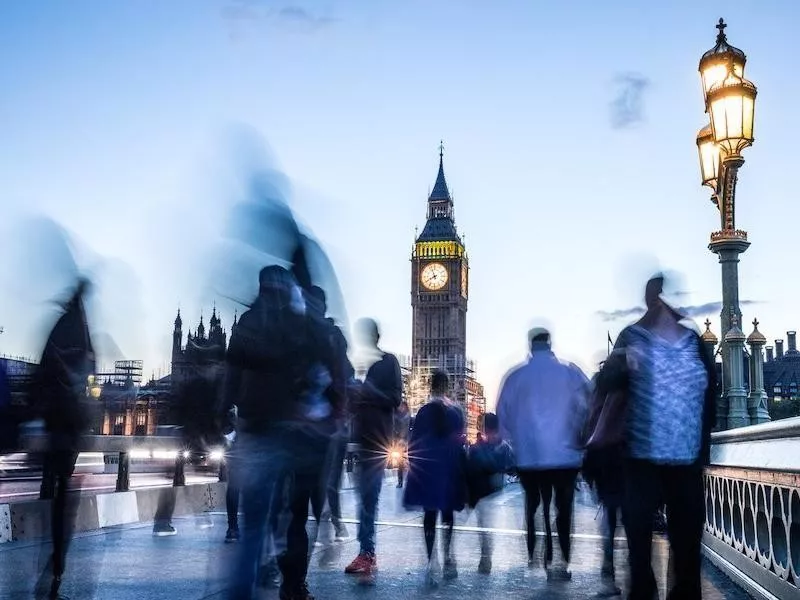
Getty
Even prior to COVID, London was toying with pedestrianization across the city. So, when the pandemic hit, the city shut out cars from entire neighborhoods like Soho.
But London is also covered in green spaces, with 3,000 parks that make up 35,000 acres — nearly half of the city!
8. Prague, Czechia
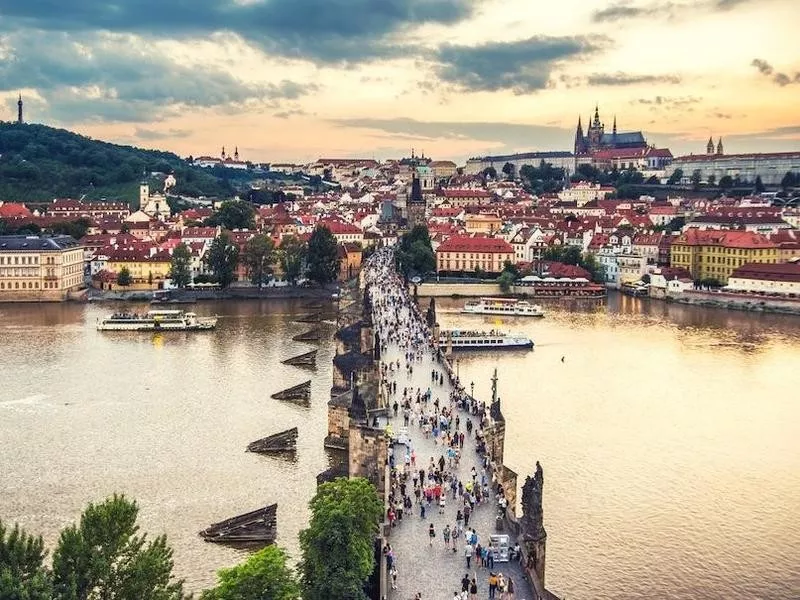
Getty
Visitors to Prague often enjoy crossing Charles Bridge to explore, enjoying the fact that it's pedestrian-only. But it's not the only place cars can't go in this historic city.
Marianske namesti, home to City Hall, went sans cars in late 2019. Near the Andel inground station is another pedestrian zone. And during the summer of COVID, Smetanovo nabrezi also became a pedestrian zone.
7. Madrid, Spain

Getty
In 2018, Madrid took a big step in becoming more walkable, announcing a car ban to eliminate vehicles from downtown, save for those driven by residents of the area. The zone includes Gran Via, the city's most famous street.
Spain's capital is also home to 40 different parks and 108 million square feet of green space.
6. Seoul, South Korea
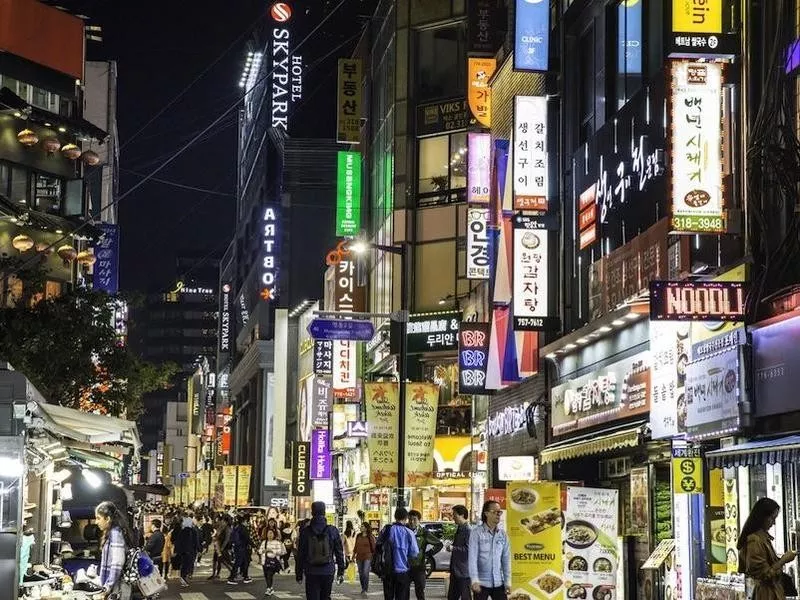
Getty
Seoul's reinventing itself as a walkable city with numerous pedestrian zones going into effect over the last decade.
In 2012, it reinvented an overpass into a pedestrian park. In 2017, four pedestrian zones were added. Then in 2019, Daehak-ro and Gangnam-ro became car-free streets. And the works continues on!
5. Beijing, China
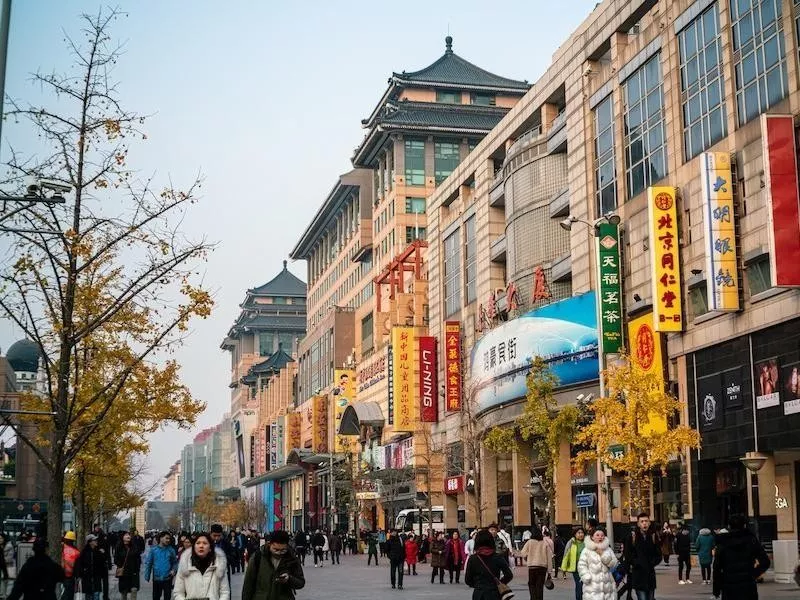
Getty
China's overpopulation and poor air quality have found its capital working to pedestrianize more areas of the city.
For walkers, Wangfujing's transformation resulted in 250,000 people traversing the street daily pre-COVID.
4. Tokyo, Japan

Getty
Known in Japan as "pedestrian heaven" or "pedestrian paradises," Tokyo's pedestrian zones involve banning cars on major roads for weekends only, giving residents a chance to enjoy the city when the workweek ends.
The city also touts more than 6,000 gardens and parks covering 2,471 acres, the largest of which is Yoyogi Park.
3. New York, United States

Getty
It's no surprise New York lands in the top three. There are 12,750 miles of sidewalks in the city. Plus, in the summer of 2009, once-gritty Times Square transformed into a family-friendly hotspot that is now pedestrian-only.
And Central Park's 1.3 square miles make up just a portion of New York's 280,000 acres of parks.
2. Lisbon, Portugal

Getty
Lisbon is home to a number of pedestrian streets and zones — think Rue Augusta near Comercio Square — that provide lively restaurants and shopping.
It, too, is a city that sits along a river with waterfront pedestrian pathways, long stretches of shaded sidewalks and large parks, including Eduardo VII Park, which spans 64 acres.
1. Vienna, Austria
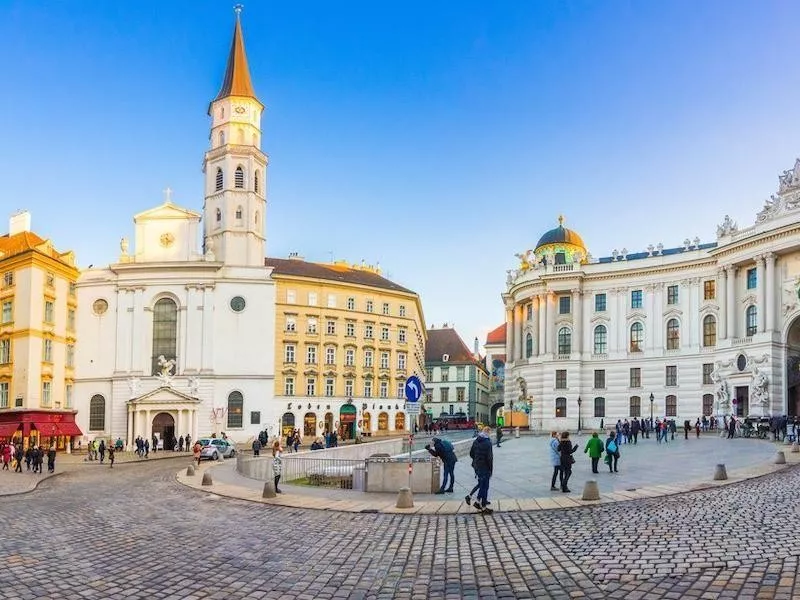
Getty
The No. 1 most walkable city in the world is Austria's capital, which turned much of its historic city center into one large pedestrian zone. Graben Street began the transformation in 1974, and it quickly spread to other popular parts of the city.
Vienna also earned the honor of being the greenest city in the world in 2020 for its parks and public transportation.
